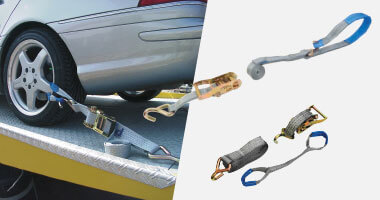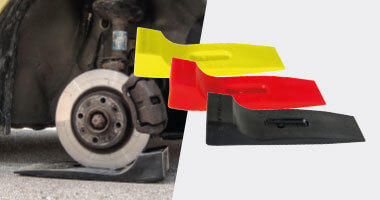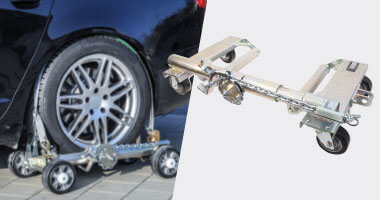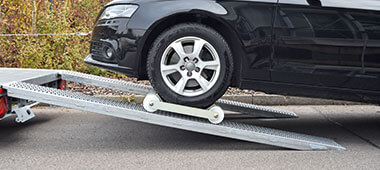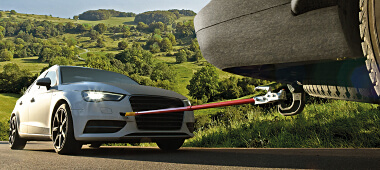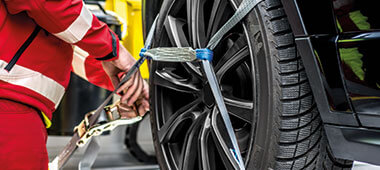Car & HGV loading
Vehicles are loaded and transported for various reasons. First and foremost is the transport of new or used cars from A to B. This is usually done by car transporters or car trains. Other causes may be a breakdown, an accident or parking in a no-parking zone. To transport these cars, they are loaded onto appropriately equipped HGVs or trailers. Cars that are not roadworthy must either be towed or lifted for loading. ProLux offers specially developed equipment for your successful use as a forwarder. As a result, you can ensure fast and damage-free loading of vehicles.
Correct loading of cars and HGVs
Depending on the situation, cars can be loaded onto a car transporter, a towing flatbed or a trailer using various aids. Cars that are ready to drive (e.g. new or used cars) can drive onto the transport vehicle under their own power. Loading ramps can compensate for any differences in height between the location of the vehicle and the loading area. This makes it easy to drive onto the vehicle during loading. Cars that are not roadworthy, on the other hand, must be loaded manually. Recovery services are well prepared for these situations. As already mentioned, there can be many reasons why a car is not ready to drive. The car comes to a standstill due to a breakdown. An accident damages the car and it becomes unroadworthy. The vehicle is parked in a no-parking zone or is blocking traffic. And these are just a few possible situations. In these cases, there are two options for loading the vehicle onto the lorry or trailer: pulling the vehicle with a cable winch or lifting it with a crane. The cable winch is used to move rolling vehicles during loading. They must therefore never be blocked by an engaged gear or an applied handbrake. If vehicles are blocked, a lifting crane with the appropriate lifting equipment is used for safe loading. This lifts the car and places it on the transport vehicle. After loading, the car must be correctly secured.
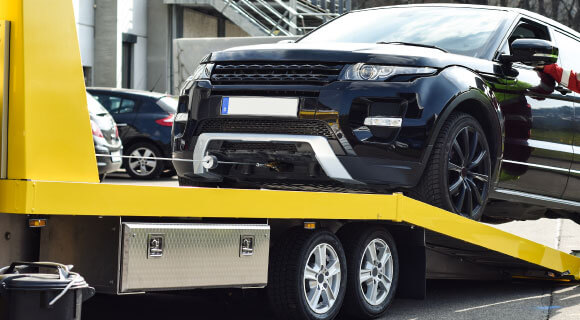
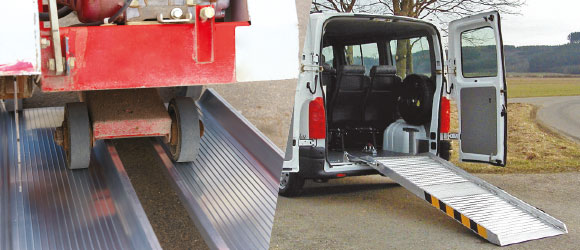
Loading with drive-on aids
Loading aids are required to overcome height differences when loading vehicles. They are particularly necessary when using trailers. In comparison to mobile towing platforms, trailers cannot normally be lowered to road level. The transport surface of the trailer is approx. 40-50 cm above ground level, and this height difference must be overcome during loading. Loading aids such as loading rails or loading ramps can be used to drive or pull the vehicle to be transported onto the transport vehicle.
Loading with winches
Vehicles that are no longer roadworthy are pulled onto the transport vehicle during loading. However, they must be able to roll. Blocked wheels can be made ready for loading with sliding wedges or wheel skates. Cable winches are required for the loading itself. Cable winches are available in manual, electric or hydraulic versions. Manual cable winches are mostly used in the trailer area if a vehicle is only pulled onto the trailer from time to time. Here, the user must operate a mechanical crank. If, on the other hand, the vehicle is frequently loaded onto the trailer or lorry, electric or hydraulic cable winches are often used. In this case, the pulling process is performed by motorised winches. The user simply controls the function of the winch.
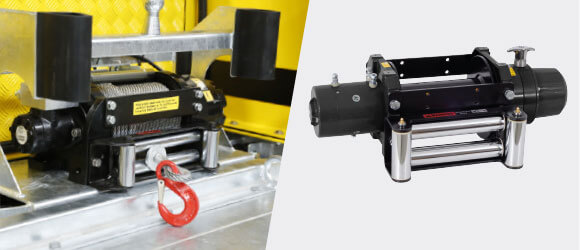
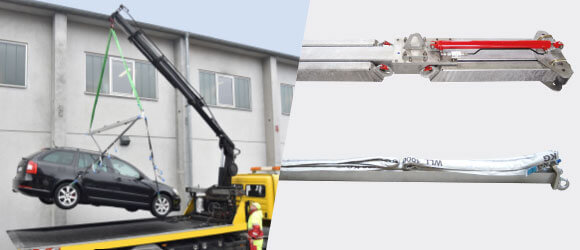
Loading by crane
Crane loading is used for vehicles involved in serious accidents or for vehicles parked in a no-parking zone. In this case, it is not possible to pull the vehicle with a cable winch. Special transport vehicles with a crane are required here. In conjunction with a lifting sling including special lifting equipment, the HGV driver can load the vehicle or motorbike properly and quickly. The professional equipment ensures that additional damage to the load is avoided.
Indispensable helpers when loading vehicles
In addition to the loading aid products mentioned above, you should also carry wheel dollies and sliding wedges with you in addition to the cable winch and lifting crane for loading vehicles that are unable to drive. Cars with locked wheels are not uncommon - even a frequently applied handbrake is sufficient. You can avoid this problem by using wheel dollies or sliding wedges to make loading quick and easy. When travelling, you must never forget to secure the load with tie-down straps. You must be prepared for your load and its securing to be checked by the police en route. Only professional load securing with a sufficient number of suitable tie-down straps will ensure problem-free transport and avoid any fines.
Recommended accessories


